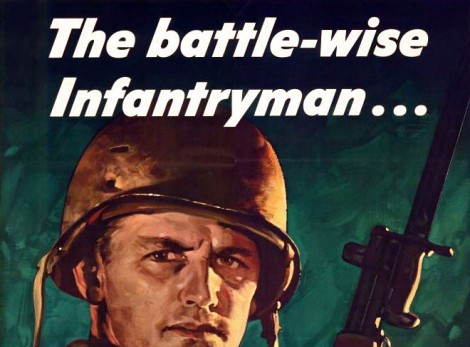Posted on: December 11, 2015 0
0

Over the weekend, an ISIS target list was published to the Internet. It contained a large number of service members and their home addresses. I will not be sharing the list, because I do not want to promote its visibility. The publication of the list has renewed fears and conversations about publically available information. But how does one choose what to post and what not to post? The answer to that question is highly subjective and requires further discussion.
So, let’s talk about PERSEC. As an individual, you need to establish what your threat level and operational need is. I’m going to use myself as an example: Before 9/11, when I was in the 82nd as an Airborne Infantryman- nobody cared too much about who knew that you served. Fort Bragg was an open post; anyone could come on and drive around. Soldiers regularly drove around with the equivalent of their 201 file on their back windshield. No big deal. The treat level was low (arguably).
Shortly after 9/11, I made it into the Unit. The covert nature of operations and the need to travel as such drastically changed my threat level and need for privacy. At the time, my Internet profile was pretty clean. I didn’t have a Facebook page, MySpace profile, or anything like that. I was however; notified by the Unit security officer that I did have something I needed to take care of. My hometown church that my parents attended began publishing the church bulletins on their websites. They regularly did prayer requests for deployed troops, by name, which effectively broadcasted your deployment cycles. I spoke with them and they fixed it. Here the threat level was extreme.
Leaving the military and entering the private sector has been a huge adjustment. Simply being the same gray man that you were in Special Operations won’t fill your classes. The level of detail being published by former SOF members in books or the increasing level of sensitive operational photos on social media has created a culture in the tactical industry, where you aren’t “legit” unless you post photos or stories that violate your NDA and the “Quiet Professional” mantra. As such, social media marketing plays a very central role in the tactical industry. As a whole, the level of disclosure is very self-regulating. I do not post pictures, details, or stories linking myself to specific mission that were conducted, others freely do so. In this example, the threat level is still high, but the need for publicity necessitates a certain assumption of risk.
What do these three examples demonstrate? PERSEC is a balancing act based on Threat VS Need. A person attempting to make a living from firearms and tactics instruction has to publicize him/herself to some extent. This will undoubtedly increase the threat level, which will have to be countered by some mitigation or preparedness. Does a Service member or LE officer share the same justification? Most likely not.
If you don’t know what your exposure level is- you probably need to Google yourself. You may be astonished with the level of information you find. Sites will be archived, but you can get on most places and control what is available on the surface. It is also a good idea to set up Google Alerts for your name, your family’s names or your company name. That will give you an email notification, should content containing your name be published. These are just some of the many tools that are available to give you some control and oversight over your exposure level.
 The mode of operation of terrorist organizations and hate groups has moved to the highly decentralized operations model of Remote Tasking. This means that followers are not directly connected to the higher organizational structure; instead shared views and social media networks connect them. This means a leader only has to broadcast a message, like the ISIS kill list, and encourage followers over social media to act on them. This means that if you are at risk, then your necessary situational awareness has moved from noticing things out of place in the physical world. You have to have social media situational awareness as well. You have to monitor what you project on the interwebs as well as monitor what others are posting. How you act on the information will vary and depend on your individual Threat VS Need assessment and the level of risk you are comfortable with.
The mode of operation of terrorist organizations and hate groups has moved to the highly decentralized operations model of Remote Tasking. This means that followers are not directly connected to the higher organizational structure; instead shared views and social media networks connect them. This means a leader only has to broadcast a message, like the ISIS kill list, and encourage followers over social media to act on them. This means that if you are at risk, then your necessary situational awareness has moved from noticing things out of place in the physical world. You have to have social media situational awareness as well. You have to monitor what you project on the interwebs as well as monitor what others are posting. How you act on the information will vary and depend on your individual Threat VS Need assessment and the level of risk you are comfortable with.